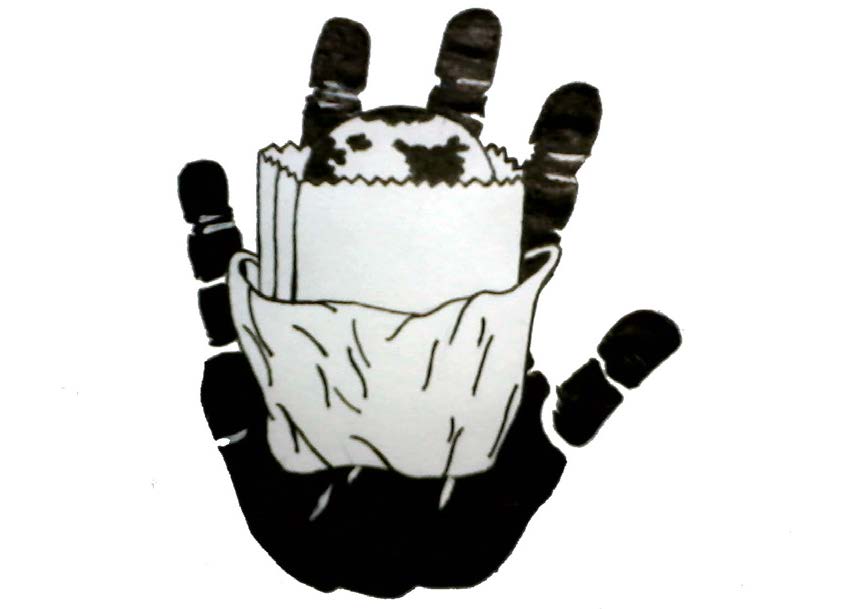The Good, the Bag, and the Ugly: The Tale of the Three Bags
April 28, 2014
When asked the question, “Paper or plastic?”, the typical reaction is to pause and say paper, thinking that it is the environmentally correct and obvious answer to a complicated question. Plastic bags are the bane of environmentalists everywhere due to their non-biodegradable nature and tendency to choke marine life. However, paper bags have surprisingly proved to be no better, causing more pollution and wasting more organic material during production. That being said, there is no need to carry groceries barehanded. An alternative to contributing to the destruction of the Earth is the always reliable, reusable canvas tote. It outlasts common grocery bags and limits the impact on the environment.
While waiting at the checkout line, not many realize the extensive and costly operation behind the bag holding their purchases. Plastic bags are made from polyethylene, a by-product of oil refining. According to the Wall Street Journal, for the 100 billion plastic bags, which the US uses annually, it takes an estimated 12 million barrels of oil to produce. Even more startling is the paper bag, using four times the amount of energy for production. These bags use precious and environmentally devastating resources to produce. Their creation involves felling around 14 million trees annually, numerous gallons of soaking water, and additional time, labor, and energy for the cutting, printing, packaging, and shipping process required. Though paper is biodegradable, the modern landfill forces 95% of garbage to be buried underneath layers of soil which makes it impossible to fully disappear. Petroleum-based plastic bags, on the other hand, are not decomposable at all. They simply break down into smaller pieces, lasting upwards to forever which is not preferred by anyone.
Unbeknownst to most, paper bags actually generate 70% more air and 50 times more water pollutants during production than plastic bags, as stated by NBC News. Due to plastic production’s use of toxic chemicals, they contribute to air, water, and acid rain pollution. However, plastics are not without fault either. The EPA ranked five out of the top six hazardous waste producing chemicals as from the plastic industry. The worst and most prominent example of their pollution is the hundreds of thousands of bags meandering in the ocean. According to the United Nations Environment Program, every square mile of ocean contains about 46,000 pieces of floating plastic in it. In some areas, the amount of plastic outweighs the amount of plankton by six to one. Because of this, many beloved aquatic animals are inching closer to extinction.
There is an abundance of negative effects for using any one of the bags stated above. Neither paper nor plastic should ever be used. Both are detrimental to the environment and contribute to the already flawed Earth. The only redeemable quality and excuse made by guilty consumers is that these bags are convenient. They are easy to use. However, while lugging around a large, unwieldy canvas bag may not be the most glamorous experience, it is by far the best alternative to paper or plastic. It provides a sound way to carry groceries and has the potential to eliminate an average of 1000 plastic bags during its lifetime.
Reusable totes are durable and will outlast any paper or plastic bag. They are cheap and frequently associated with charitable organizations. Next time that fateful question of “paper or plastic?” is asked, respond instantaneously with neither and instead say, “freshly washed reusable canvas bag please.”








